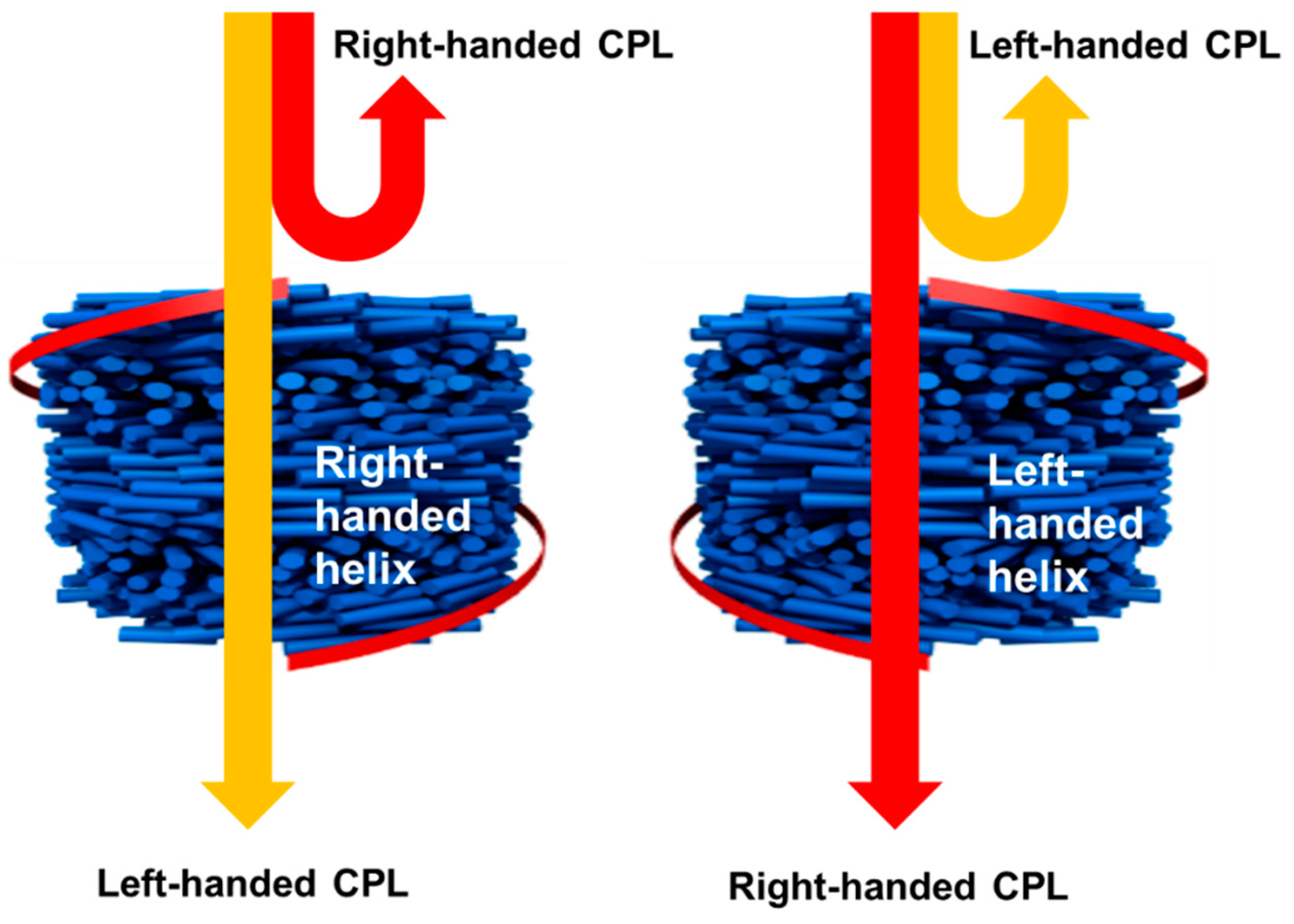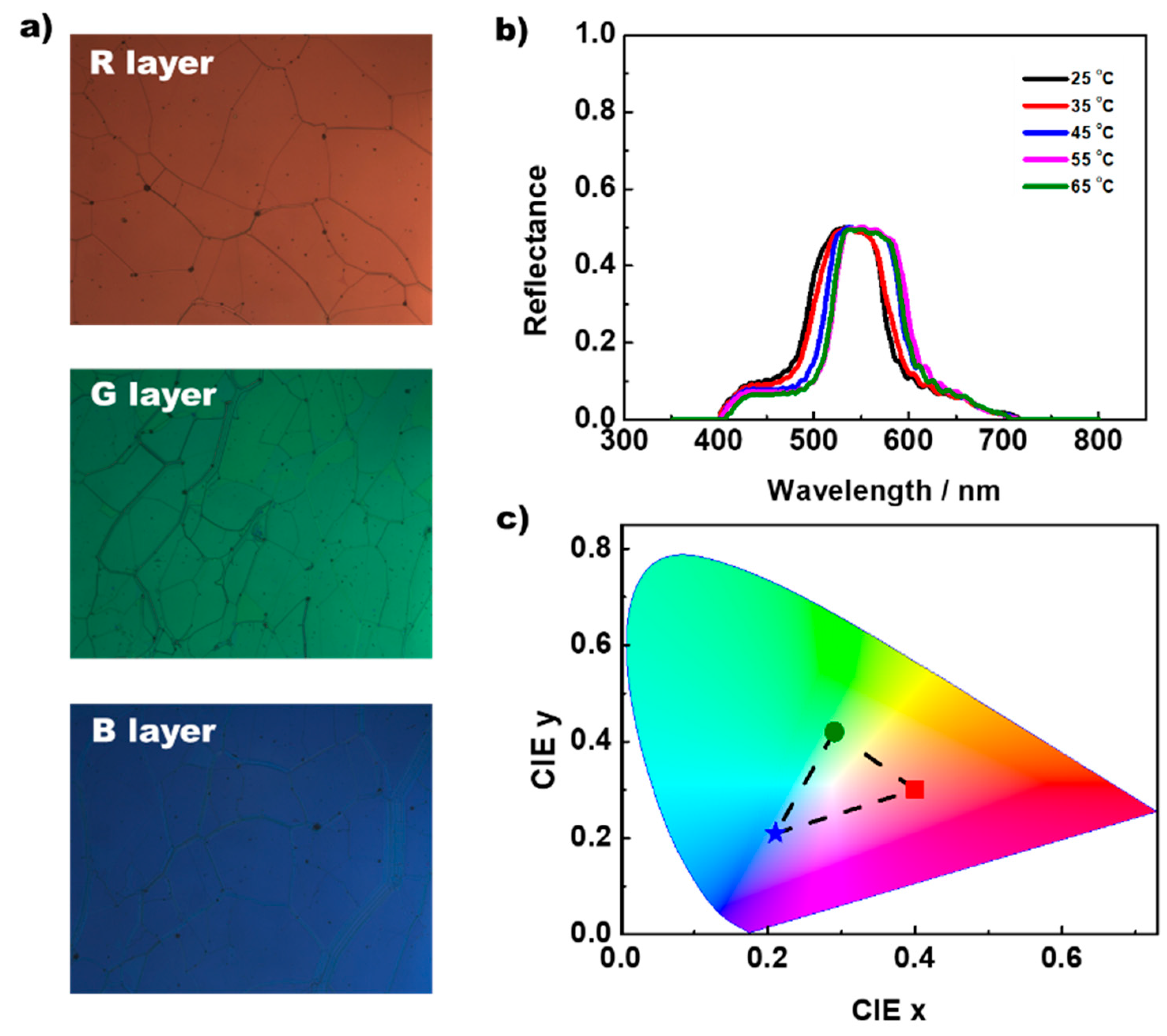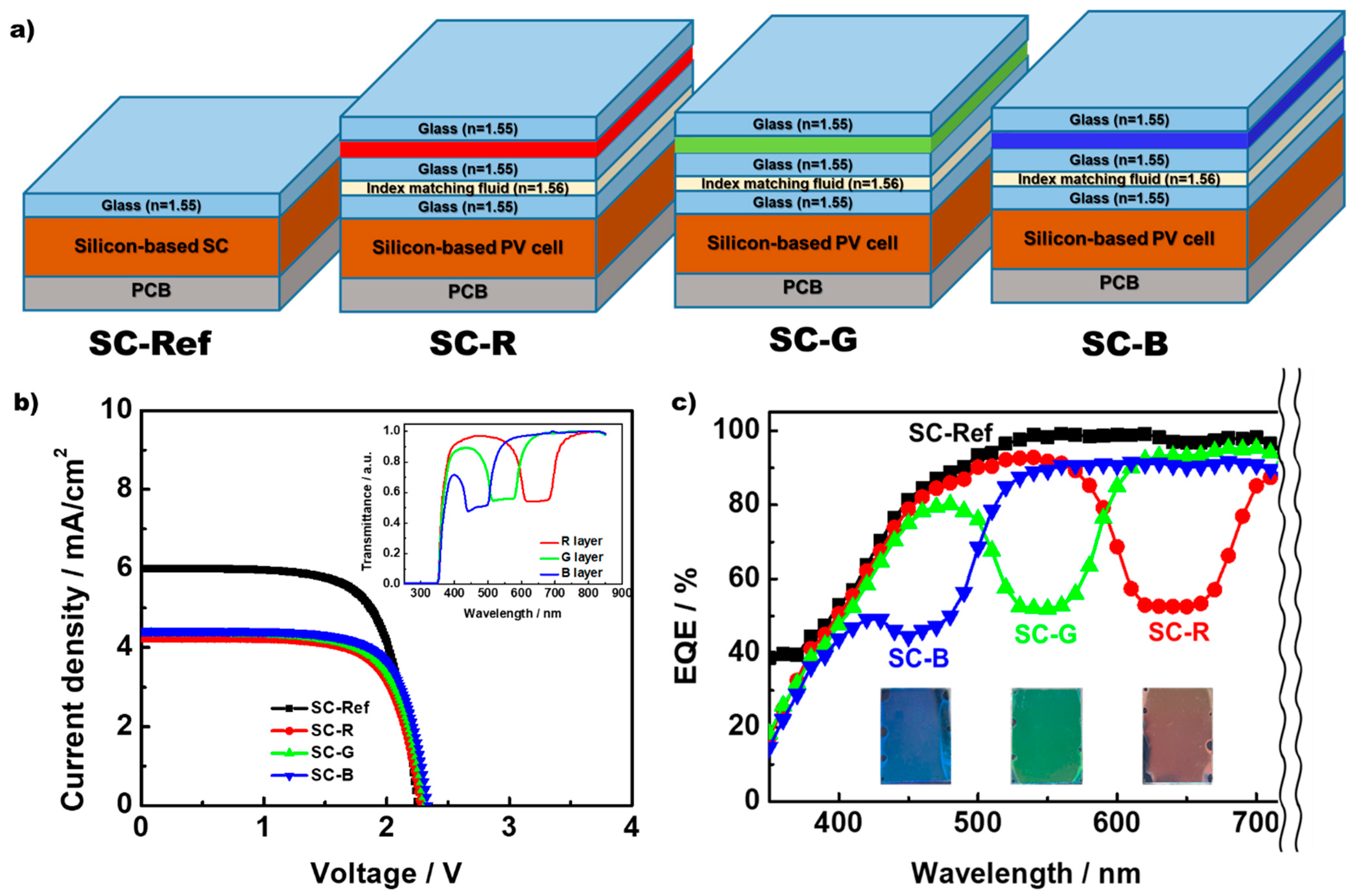Liquid Crystalline Cholesteric Reflective Layers for Colored Silicon-Based Solar Cells
Abstract
:Author Contributions
Funding
Data Availability Statement
Conflicts of Interest
References
- Bae, J.-H.; Jung, E.D.; Nam, Y.S.; Kim, B.-C.; Choi, H.-J.; Kim, H.G.; Song, M.H.; Choi, S.-W. Micro-Segregated Liquid Crystal Haze Films for Photovoltaic Applications: A Novel Strategy to Fabricate Haze Films Employing Liquid Crystal Technology. Materials 2018, 11, 2188. [Google Scholar] [CrossRef] [PubMed] [Green Version]
- Ballif, C.; Perret-Aebi, L.E.; Lufkin, S.; Rey, E. Integrated thinking for photovoltaics in buildings. Nat. Energy 2018, 3, 438–442. [Google Scholar] [CrossRef]
- Batmunkh, M.; Zhong, Y.L.; Zhao, H. Recent advances in perovskite-based building-integrated photovoltaics. Adv. Mater. 2020, 32, 2000631. [Google Scholar] [CrossRef] [PubMed]
- Yoo, G.Y.; Azmi, R.; Kim, C.; Kim, W.; Min, B.K.; Jang, S.Y.; Do, Y.R. Stable and colorful perovskite solar cells using a nonperiodic SiO2/Tio2 multi-nanolayer filter. ACS Nano 2019, 13, 10129–10139. [Google Scholar] [CrossRef]
- Lee, K.; Kim, N.; Kim, K.; Um, H.D.; Jin, W.; Choi, D.; Park, J.; Park, K.J.; Lee, S.; Seo, K. Neutral-colored transparent crystalline silicon photovoltaics. Joules 2020, 4, 235–246. [Google Scholar] [CrossRef]
- Debbarma, M.; Sudhakar, K.; Baredar, P. Comparison of BIPV and BIPVT: A review. Resour.-Effic. Technol. 2017, 3, 263–271. [Google Scholar] [CrossRef]
- Upama, M.B.; Mahmud, M.A.; Yi, H.; Elumalai, N.K.; Conibeer, G.; Wang, D.; Xu, C.; Uddin, A. Low-temperature processed efficient and colourful semitransparent perovskite solar cells for building integration and tandem applications. Org. Electron. 2019, 65, 401–411. [Google Scholar] [CrossRef]
- Lu, J.H.; Yu, Y.L.; Chuang, S.R.; Yeh, C.H.; Chen, C.P. High-performance, semitransparent, easily tunable vivid colorful perovskite photovoltaics featuring Ag/Ito/Ag microcavity structures. J. Phys. Chem. C 2016, 120, 4233–4239. [Google Scholar] [CrossRef]
- Jung, J.W.; Chueh, C.C.; Jen, A.K.Y. High-Performance Semitransparent Perovskite Solar Cells with 10% Power Conversion Efficiency and 25% Average Visible Transmittance Based on Transparent CuSCN as the Hole-Transporting Material. Adv. Energy Mater. 2015, 5, 1500486. [Google Scholar] [CrossRef]
- Lee, B.J.; Lahann, L.; Li, Y.; Forrest, S.R. Cost estimates of production scale semitransparent organic photovoltaic modules for building integrated photovoltaics. RCS. Chem. 2020, 11, 5765–5772. [Google Scholar]
- Ji, C.; Zhang, Z.; Masuda, T.; Kudo, Y.; Guo, L.J. Vivid-colored silicon solar panels with high efficiency and non-iridescent appearance. Nanoscale Horiz. 2019, 4, 874–880. [Google Scholar] [CrossRef]
- Deng, K.; Liu, Z.; Wang, M.; Li, L. Nanoimprinted Grating-Embedded Perovskite Solar Cells with Improved Light Management. Adv. Funct. Mater. 2019, 29, 1900830. [Google Scholar] [CrossRef]
- Lee, K.T.; Jang, J.Y.; Zhang, J.; Yang, S.M.; Park, S.; Park, H.J. Highly Efficient Colored Perovskite Solar Cells Integrated with Ultrathin Subwavelength Plasmonic Nanoresonators. Sci. Rep. 2017, 7, 10640. [Google Scholar] [CrossRef] [PubMed] [Green Version]
- Hur, S.T.; Lee, B.R.; Gim, M.J.; Park, K.W.; Song, M.H.; Choi, S.W. Liquid-Crystalline Blue Phase Laser with Widely Tunable Wavelength. Adv. Mater. 2013, 35, 3002–3006. [Google Scholar] [CrossRef] [PubMed]
- Choi, H.J.; Bae, J.H.; Bae, S.W.; Lee, J.J.; Nishikawa, H.; Araoka, F.; Choi, S.W. Development of a liquid crystal laser using a simple cubic liquid crystalline blue phase platform. RSC Adv. 2019, 9, 32922–32927. [Google Scholar] [CrossRef] [Green Version]
- Zheng, Z.-G.; Lu, Y.-Q.; Li, Q. Photoprogrammable mesogenic soft helical architectures: A promising avenue toward future chiro-optics. Adv. Mater. 2020, 32, 1905318. [Google Scholar] [CrossRef] [PubMed]
- Hur, S.-T.; Gim, M.-J.; Yoo, H.-J.; Choi, S.-W.; Takezoe, H. Investigation for correlation between elastic constant and thermal stability of liquid crystalline blue phase I. Soft Matter 2011, 7, 8800–8803. [Google Scholar] [CrossRef]
- de Gennes, P.G.; Prost, J. The Physics of Liquid Crystals; Oxford Science: Oxford, UK, 1993. [Google Scholar]
- Mitov, M.; Dessaud, N. Going beyond the reflectance limit of cholesteric liquid crystals. Nat. Mater. 2006, 5, 361–364. [Google Scholar] [CrossRef] [PubMed]




| VOC [V] | JSC [mA/cm2] | FF [%] | PCE [%] | Relative PCE [%] | PCE Loss [%] | |
|---|---|---|---|---|---|---|
| SC-Ref | 2.25 ± 0.05 | 4.65 ± 0.02 | 70 ± 1 | 7.43 ± 0.22 | 100 | - |
| SC-R | 2.25 ± 0.03 | 3.33 ± 0.03 | 71 ± 1 | 5.38 ± 0.14 | 72 | 28 |
| SC-G | 2.27 ± 0.02 | 3.45 ± 0.02 | 71 ± 1 | 5.60 ± 0.12 | 75 | 25 |
| SC-B | 2.22 ± 0.02 | 3.57 ± 0.02 | 71 ± 1 | 5.68 ± 0.08 | 77 | 23 |
Publisher’s Note: MDPI stays neutral with regard to jurisdictional claims in published maps and institutional affiliations. |
© 2021 by the authors. Licensee MDPI, Basel, Switzerland. This article is an open access article distributed under the terms and conditions of the Creative Commons Attribution (CC BY) license (https://creativecommons.org/licenses/by/4.0/).
Share and Cite
Bae, S.; Park, D.-S.; Choi, S.-W. Liquid Crystalline Cholesteric Reflective Layers for Colored Silicon-Based Solar Cells. Crystals 2021, 11, 1336. https://doi.org/10.3390/cryst11111336
Bae S, Park D-S, Choi S-W. Liquid Crystalline Cholesteric Reflective Layers for Colored Silicon-Based Solar Cells. Crystals. 2021; 11(11):1336. https://doi.org/10.3390/cryst11111336
Chicago/Turabian StyleBae, Sangwok, Dong-Sun Park, and Suk-Won Choi. 2021. "Liquid Crystalline Cholesteric Reflective Layers for Colored Silicon-Based Solar Cells" Crystals 11, no. 11: 1336. https://doi.org/10.3390/cryst11111336
APA StyleBae, S., Park, D.-S., & Choi, S.-W. (2021). Liquid Crystalline Cholesteric Reflective Layers for Colored Silicon-Based Solar Cells. Crystals, 11(11), 1336. https://doi.org/10.3390/cryst11111336





